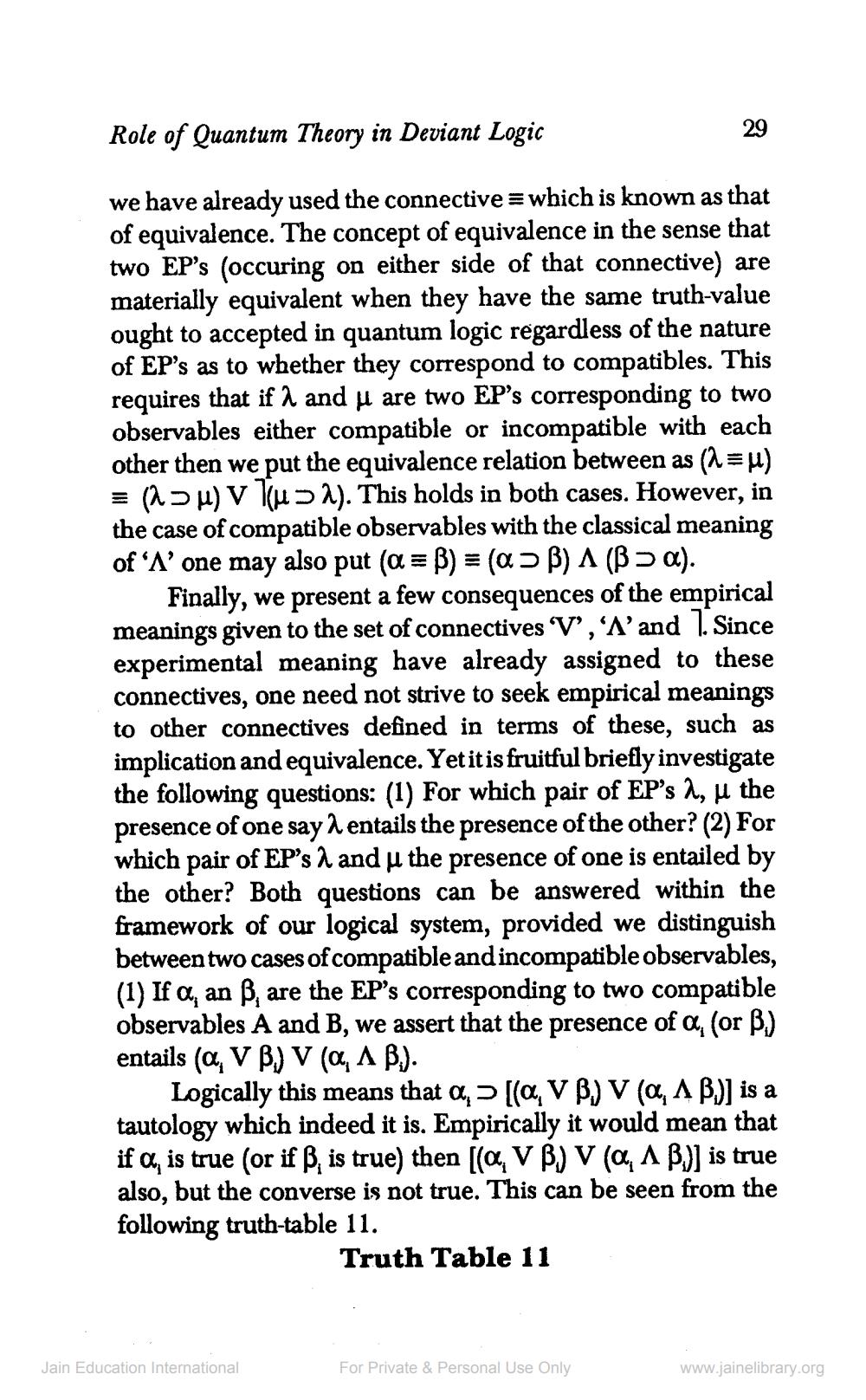________________
Role of Quantum Theory in Deviant Logic
29
we have already used the connective = which is known as that of equivalence. The concept of equivalence in the sense that two EP's (occuring on either side of that connective) are materially equivalent when they have the same truth-value ought to accepted in quantum logic regardless of the nature of EP's as to whether they correspond to compatibles. This requires that if 1 and u are two EP's corresponding to two observables either compatible or incompatible with each other then we put the equivalence relation between as (a=u) = (
a u) V kua). This holds in both cases. However, in the case of compatible observables with the classical meaning of 'A' one may also put (a = B) = (a > B) A (
B a ). Finally, we present a few consequences of the empirical meanings given to the set of connectives 'V','A' and 1. Since experimental meaning have already assigned to these connectives, one need not strive to seek empirical meanings to other connectives defined in terms of these, such as implication and equivalence. Yet it is fruitful briefly investigate the following questions: (1) For which pair of EP's 2, u the presence of one saya entails the presence of the other? (2) For which pair of EP's, and u the presence of one is entailed by the other? Both questions can be answered within the framework of our logical system, provided we distinguish between two cases of compatible and incompatible observables, (1) If a, an B, are the EP's corresponding to two compatible observables A and B, we assert that the presence of a, (or B) entails (a, V B.) V (a, A B.).
Logically this means that a, [(a, V B) V (a, A B)] is a tautology which indeed it is. Empirically it would mean that if Q, is true (or if B, is true) then [(a, VB) V (a, A B)] is true also, but the converse is not true. This can be seen from the following truth-table 11.
Truth Table 11
Jain Education International
For Private & Personal Use Only
www.jainelibrary.org




